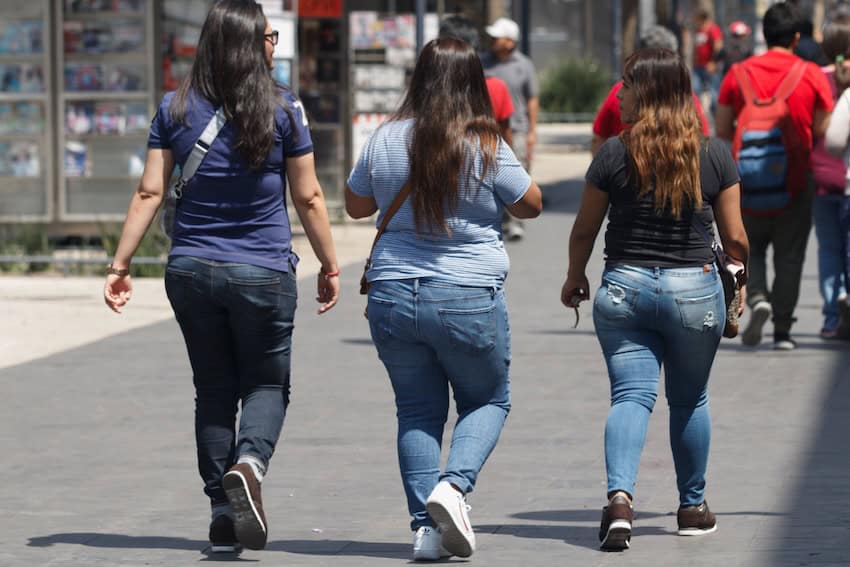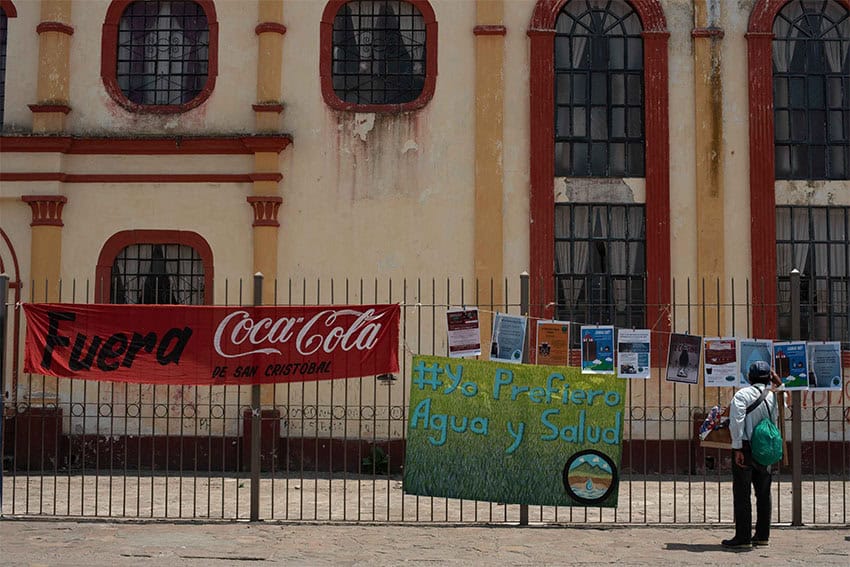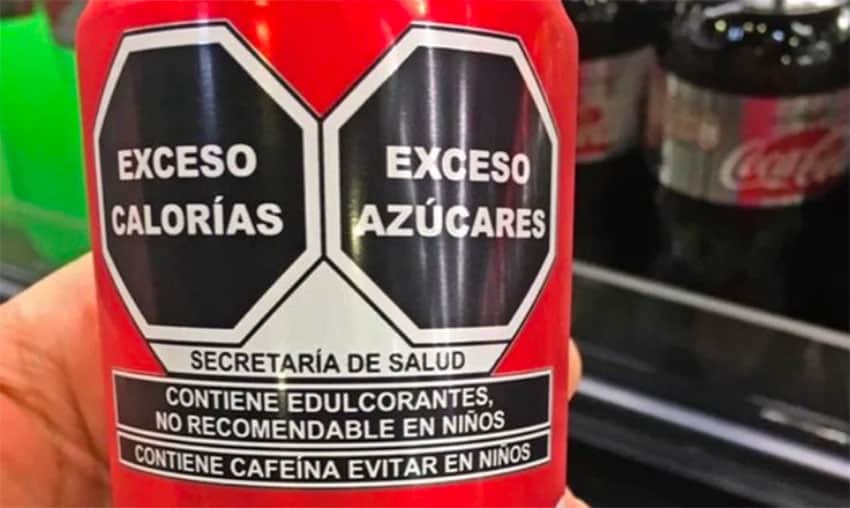A gringa’s take on obesity in Mexico

As I stood in line at a local Guanajuato supermarket, watching a boy about the age of 8 buying a three-liter bottle of Coke, I remembered the opening scene in the 2012 documentary, “Globesity” a film exploring the explosion of global obesity and how it is specifically affecting Mexico, Brazil, India and China. The scene depicts a Mother’s Day celebration at an elementary school in Chiapas, where moms, teachers and kids are chatting in the schoolyard, drinking not bottled water but Coke. According to the film, one reason for the prevalence of Coke in Chiapas is that in some communities Coca-Cola strategically priced its drinks slightly less than bottled water. It’s perhaps no wonder that obesity in Mexico is something of an national crisis.
Residents of Chiapas drink more Coke than anywhere in the world, in a country that is fourth in the world in the consumption of soft drinks. Residents of San Cristóbal de las Casas drink more than two liters, or half a gallon, of soda a day on average. This consumption has been tied to the water crisis in the state, where just 7 percent of households believe their water is safe to drink, according to a 2023 Inegi survey. 80 of the state’s 124 municipalities lack adequate access to potable water, with Indigenous communities worst affected. The problem is exacerbated by corporate water consumption, a situation which has often been described as Coca-Cola selling Chiapanecans’ own water back to them as soft drinks. Not surprisingly, the mortality rate from diabetes in Chiapas increased 30 percent between 2013 and 2016, and the disease is now the second-leading cause of death in the state after heart disease.
While Chiapas is the biggest consumer of Coke, overweight is a health issue across the country. According to data from the National Health and Nutrition Surveys in 2021, over 37% of Mexican school age children were overweight or obese.
Diet culture and obesity in Mexico
The phrase “diet culture” refers to a system of beliefs and expectations that values thinness, creates an obsession around food and exercise and stigmatizes overweight. In the United States, diet culture often leads to anxiety and shame. I know this intimately, because my mother put me on the first of many diets when I was 11. Although I wasn’t heavy, she was anxious that I might gain weight, because she had been taunted as a teenager for being plump. While my mother’s obsession was extreme, today it’s just one of many examples of the bizarre diet culture that is completely normalized in the U.S.
Although obesity is a serious problem in Mexico, the diet culture is much less prominent than in the U.S. On the list of the world’s top ten most diet-obsessed countries, Mexico, unlike the U.S. (#1) and Canada (#7), is conspicuously absent. According to my Spanish teachers, anxiety about being overweight exists in Mexico and has increased since the advent of social media. Nonetheless, Diet Cokes and Pepsis aren’t crammed on supermarket shelves; the media isn’t filled with one diet after another; and moms haven’t let go of the age-old custom of taking their kids to a “tiendita” after school to buy a treat.

Does Mexico’s more relaxed attitude help bring about weight loss?
While research shows that fat-shaming doesn’t help a person lose weight — in fact, quite the opposite — a relaxed, compassionate approach to a person’s obesity isn’t a complete solution, either. It turns out parents can be too relaxed. A 2016 study, for example, showed that while Mexican mothers correctly perceived their overweight children to be overweight, they weren’t concerned about it because they viewed it as something temporary that the child would outgrow. By and large, this is not true: One study found that 70% of kids who were overweight at age seven remained overweight as adults.
A 2015 study of 1380 low-income households in Mexico City found that childhood overweight was seen as a normal, even desirable condition: overweight children were seen as “taller, stronger, more of a leader, healthier and smarter than normal and thin children.” The study’s authors noted that mothers and grandmothers tended to define nutrition practices and that grandparents were strongly influenced by memories of a time when overweight children had better chances of surviving malnutrition and disease.
Government action

Since 2014, the Mexican government has taken steps to address the overweight and obesity epidemic. That year, it launched campaigns to combat the obesity epidemic, including taxes on sodas and high-calorie snacks, successfully reducing sales of sugar-sweetened beverages.
In 2020, three state legislatures in Mexico passed laws banning the sale of sugary drinks and high-calorie packaged foods to minors. Oaxaca was the first, followed by Tabasco and Colima. That year, the government enacted a law requiring manufacturers to mark the packaging of foods high in saturated fat, trans fat, sugar, sodium or calories with informational labels.
And as of April, schools in Mexico will no longer be allowed to sell any snack that has a warning label showing it has high amounts of salt, sugar or fat. Those that don’t follow these rules will be subject to fines.
These are a good start, but the complexity of the problem remains enormous. For example, the law prohibiting schools from selling “comida chattara” (junk food) does not apply to vendors outside the school grounds. A recent report by the Education Ministry (SEP) found that 77% of schools had such junk food stands nearby.
I view the Mexican child obesity crisis with a mixture of anger, cautious optimism and compassion: anger at the self-serving greed of multinational corporations, optimism that the Mexican government is taking the initiative to address the issue and compassion for the challenges and complexity that Mexican parents face when they try to feed their children well.
Louisa Rogers and her husband Barry Evans divide their lives between Guanajuato and Eureka, on California’s North Coast. Louisa writes articles and essays about expat life, Mexico, travel, physical and psychological health, retirement and spirituality. Her recent articles can be found on her website.
Source: Mexico News Daily

